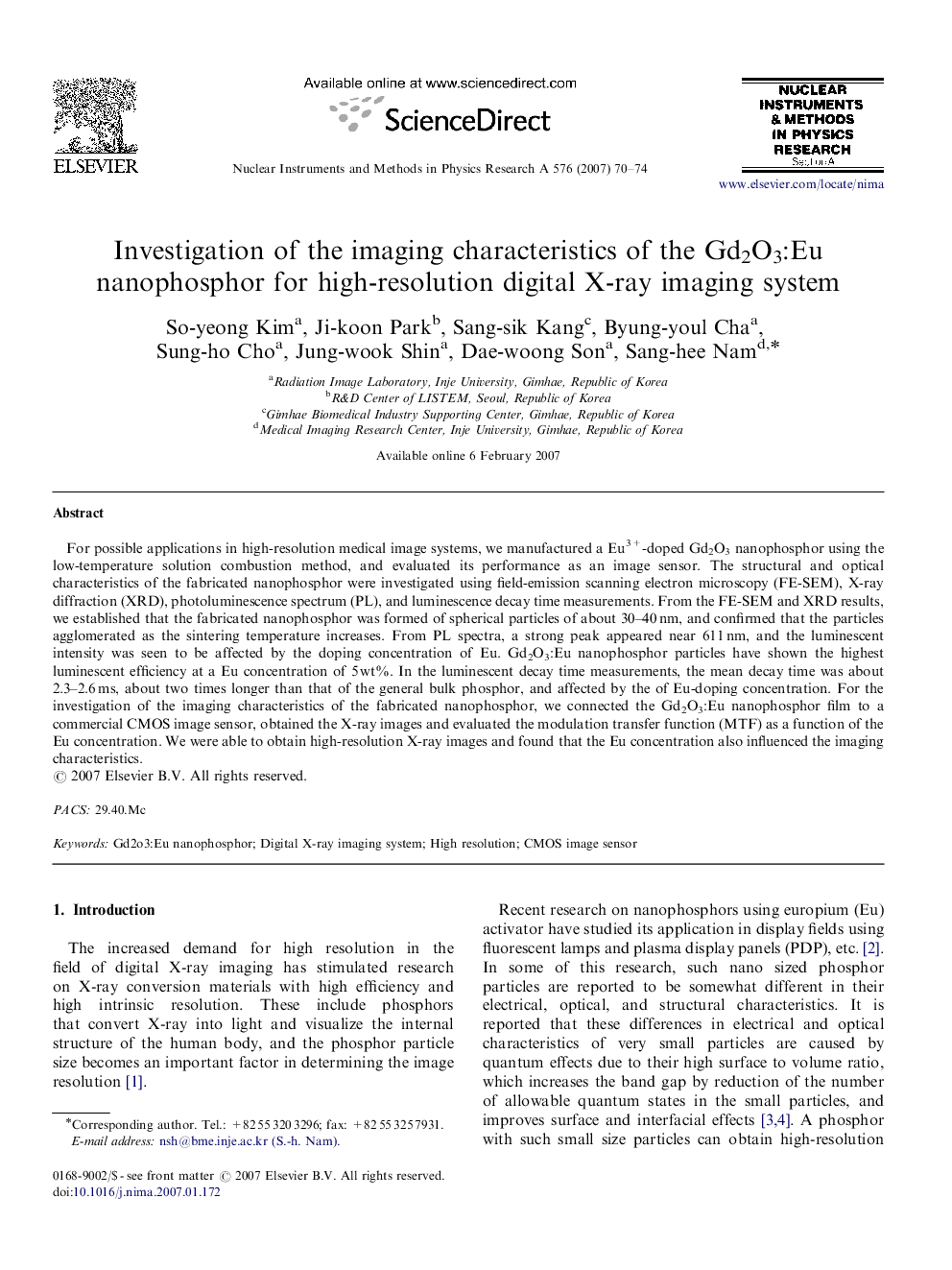| Article ID | Journal | Published Year | Pages | File Type |
|---|---|---|---|---|
| 1830836 | Nuclear Instruments and Methods in Physics Research Section A: Accelerators, Spectrometers, Detectors and Associated Equipment | 2007 | 5 Pages |
Abstract
For possible applications in high-resolution medical image systems, we manufactured a Eu3+-doped Gd2O3 nanophosphor using the low-temperature solution combustion method, and evaluated its performance as an image sensor. The structural and optical characteristics of the fabricated nanophosphor were investigated using field-emission scanning electron microscopy (FE-SEM), X-ray diffraction (XRD), photoluminescence spectrum (PL), and luminescence decay time measurements. From the FE-SEM and XRD results, we established that the fabricated nanophosphor was formed of spherical particles of about 30-40Â nm, and confirmed that the particles agglomerated as the sintering temperature increases. From PL spectra, a strong peak appeared near 611Â nm, and the luminescent intensity was seen to be affected by the doping concentration of Eu. Gd2O3:Eu nanophosphor particles have shown the highest luminescent efficiency at a Eu concentration of 5Â wt%. In the luminescent decay time measurements, the mean decay time was about 2.3-2.6Â ms, about two times longer than that of the general bulk phosphor, and affected by the of Eu-doping concentration. For the investigation of the imaging characteristics of the fabricated nanophosphor, we connected the Gd2O3:Eu nanophosphor film to a commercial CMOS image sensor, obtained the X-ray images and evaluated the modulation transfer function (MTF) as a function of the Eu concentration. We were able to obtain high-resolution X-ray images and found that the Eu concentration also influenced the imaging characteristics.
Related Topics
Physical Sciences and Engineering
Physics and Astronomy
Instrumentation
Authors
So-yeong Kim, Ji-koon Park, Sang-sik Kang, Byung-youl Cha, Sung-ho Cho, Jung-wook Shin, Dae-woong Son, Sang-hee Nam,
